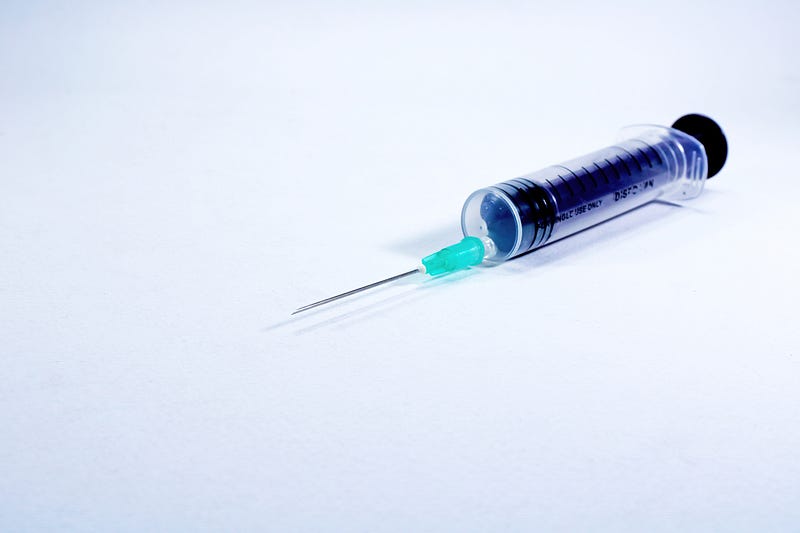# Understanding the Risks of Air Bubbles in Syringes
Written on
Chapter 1: The Myth of Air Bubbles in Syringes
Have you ever pondered if a tiny air bubble from a syringe could be fatal? It's a thought often dramatized in medical shows, where a patient, after receiving an injection, suddenly collapses due to an air bubble in their bloodstream. While this scenario is certainly alarming, the reality is more nuanced.
This paragraph will result in an indented block of text, typically used for quoting other text.
Section 1.1: The Basics of Blood Flow
Blood circulates through two primary systems: the arterial and venous systems. The arteries carry oxygen-rich blood from the lungs to various organs, while veins transport oxygen-poor blood back to the lungs.
If a small air bubble inadvertently enters the bloodstream, it usually gets filtered out in the lungs, where it can safely diffuse and be expelled.

However, a bubble's danger depends on its location. While it may pose little threat if it reaches the lungs, its effects can be severe if directed elsewhere.
Section 1.2: The Risks of Air Bubbles
Air bubbles can be particularly harmful if they travel to critical areas, such as the heart or brain.
Air in the Heart
A significant air bubble can block a heart chamber, disrupting blood flow and potentially leading to severe complications.
Air in the Brain
Similarly, a bubble in a vessel supplying blood to the brain can obstruct vital oxygen flow, resulting in a stroke.
Chapter 2: How Much Air is Too Much?
How To Remove Air Bubbles From Syringe - YouTube
This video provides practical guidance on how to effectively eliminate air bubbles from syringes to ensure safety during injections.
How to get bubbles out of your BD syringe - YouTube
This tutorial focuses on techniques specifically for BD syringes, helping users avoid potential complications from air bubbles.
As a precaution, medical professionals are trained to prevent air from entering syringes before injections. In IV setups, devices are equipped with sensors to detect air bubbles and sound alarms if necessary.
Section 2.1: Safety Guidelines
Most experts agree that up to 50 mL of air is generally safe, while anything over 100 mL can be lethal if injected rapidly. However, even smaller air bubbles can pose risks if they lodge in narrow vessels, potentially causing strokes.
It's crucial to minimize air in the bloodstream whenever possible.
In conclusion, while air bubbles in syringes can be concerning, small ones are typically filtered out by the lungs without causing harm. Larger bubbles, however, can lead to serious health issues, highlighting the importance of proper technique in medical settings.
Thank you for reading! If you find this information valuable, consider subscribing to my mailing list for updates on future articles. Your support is greatly appreciated!